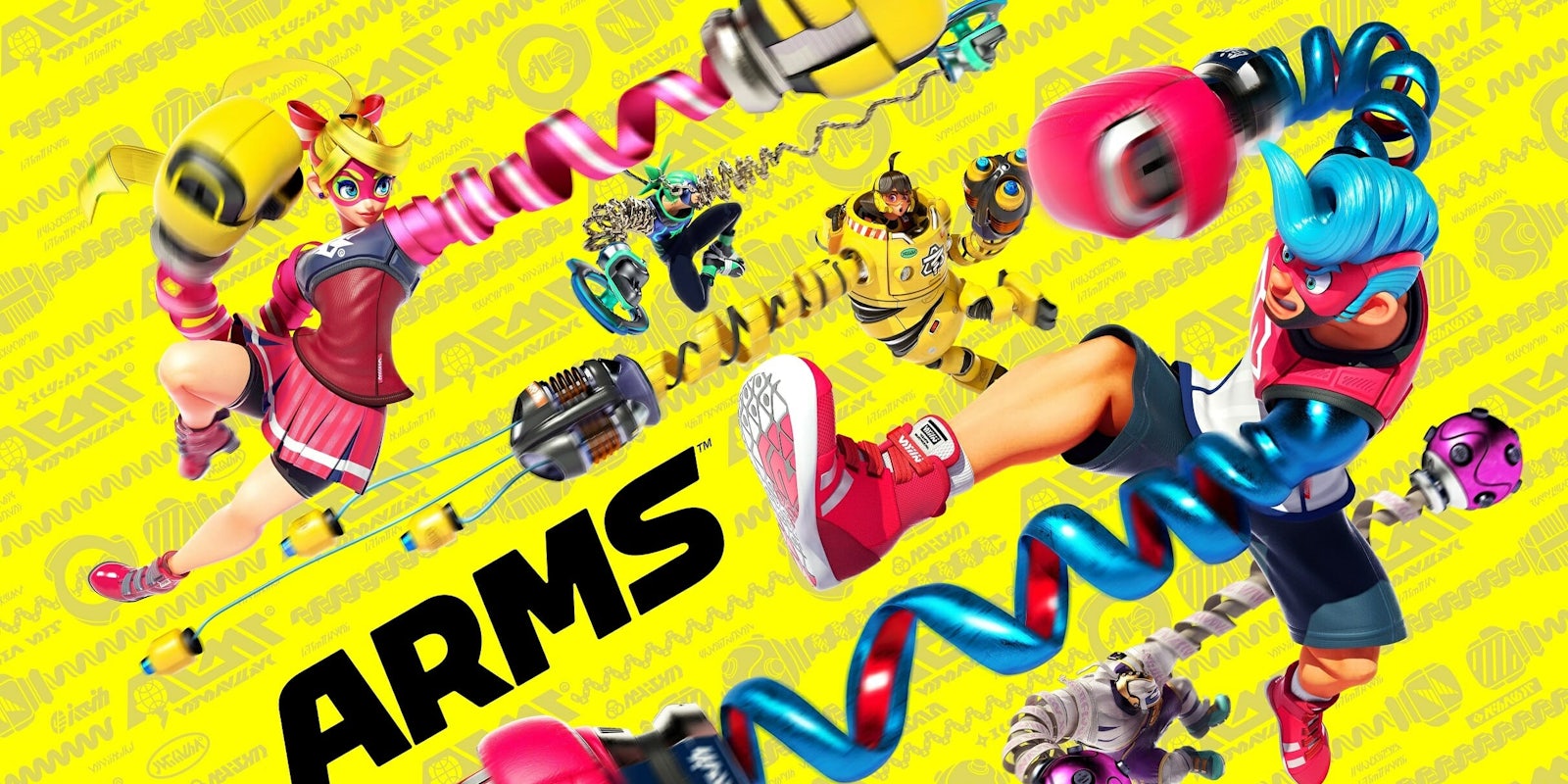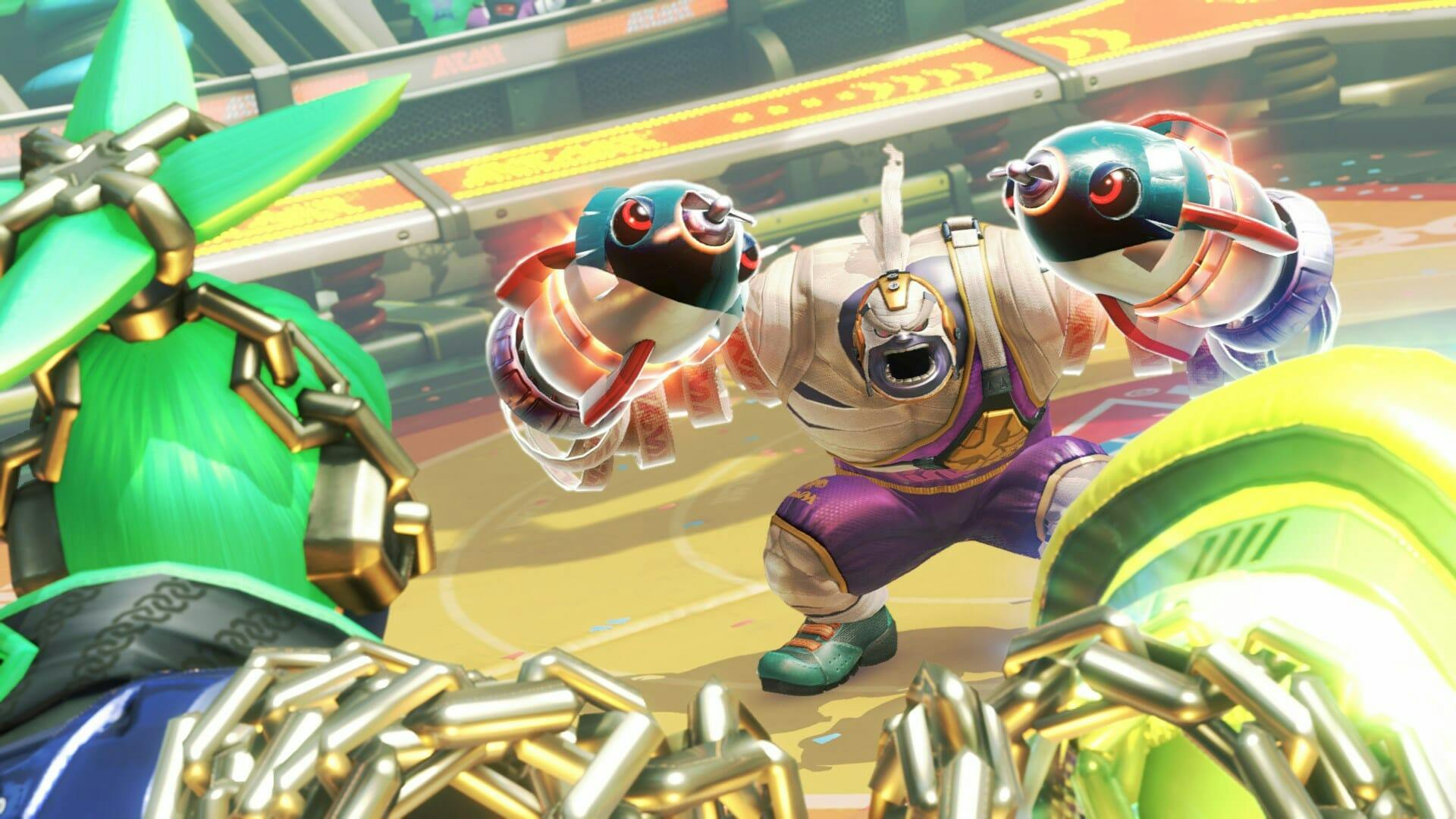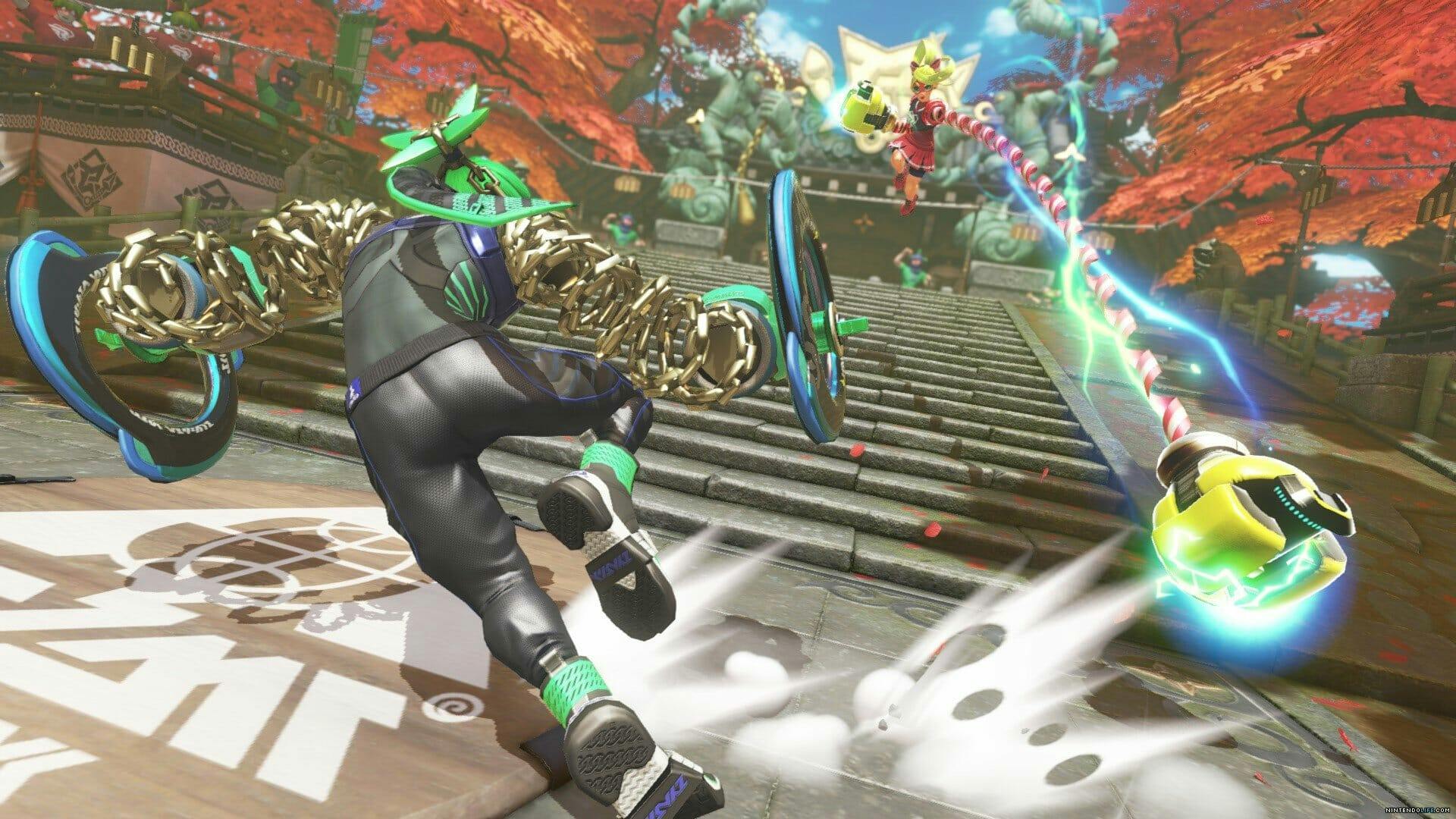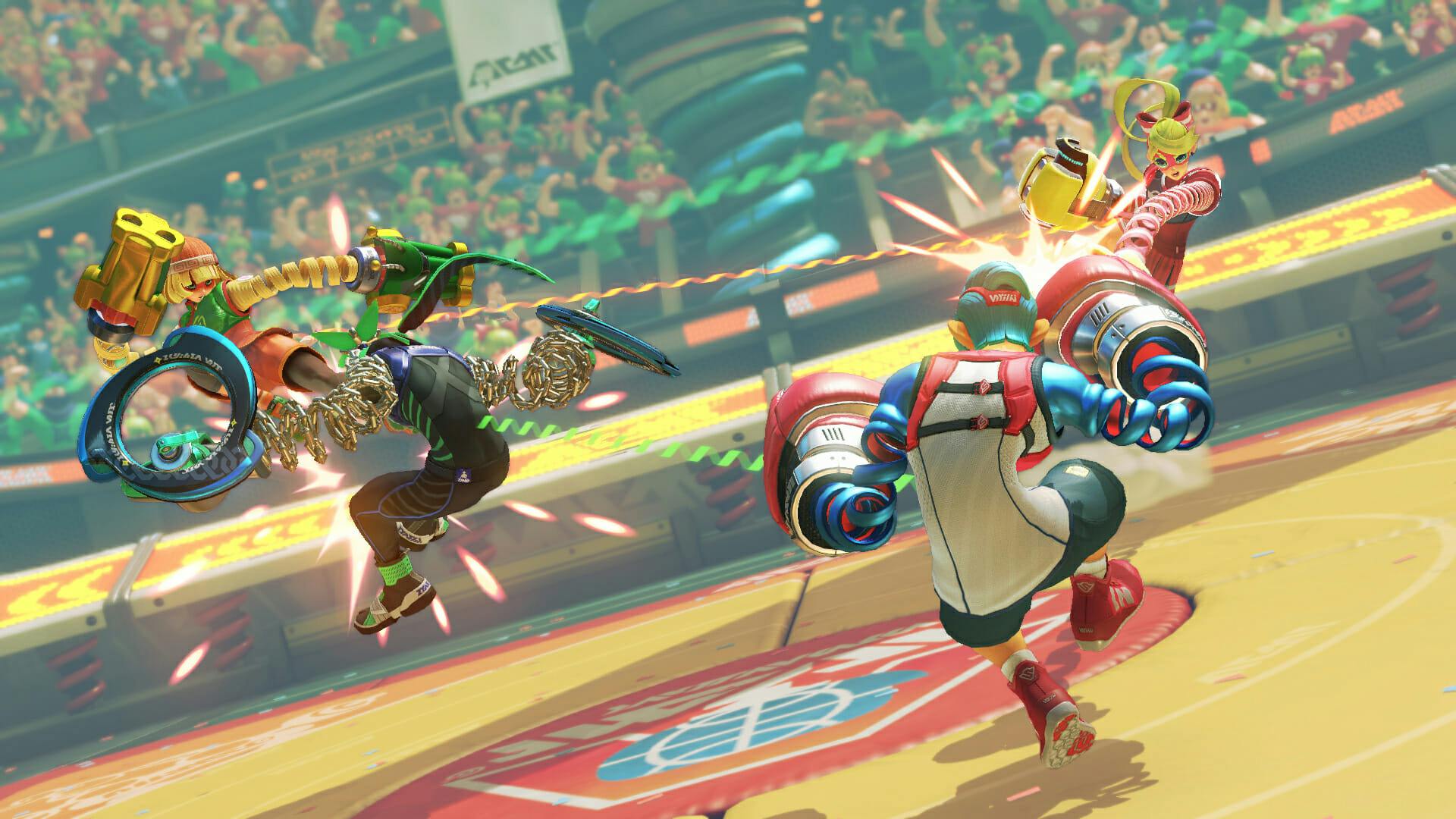Nintendo’s newest, colorful IP challenges the traditional fighting game experience. It wants players up off the couch, away from a joystick, and unconcerned with complicated combos. In many ways, ARMS might seem like a simplified version of the decade-spanning conventions of an entire genre. However, at the core, the game’s mechanics are engaging and more complicated than they may seem, although this current package doesn’t highlight those unique aspects quite enough.
As one might guess, the arms, and more specifically the fists, of each fighter on the roster are the source of all diversity and complexity within the game. Two, sometimes three or four, players enter an arena and set their loadouts. From there, an often tense volley of punches and projectiles fly back-and-forth.
Each arm holds unique attributes that affect how the fighter moves and deals damage. Some can stun foes, while others block incoming attacks. There are 30 different fists to try out, originally distributed across the 10-character selection screen. By collecting coins through each of the game’s various modes, these weapons can be purchased at random and unlocked for each character.
What might prove to be ARMS’ most divisive feature is the prominence of motion controls. This is the first big title to capitalize on the Nintendo Switch’s removable, movement tracking controllers in a way that is intrinsically tied to gameplay. You can opt to play using standard face buttons and analog sticks on either the Pro controller or the undocked console, at the cost of finding yourself significantly handicapped in higher-level play.
Throwing a punch isn’t the most important factor of fighting in ARMS, but rather it’s the crucial seconds afterwards. Holding one Joy-Con in each hand, the player is expected to twist their wrist in the appropriate direction to guide the projectile. These subtle movements can’t be accurately replicated or controlled in as dedicated a fashion using standard controls, meaning for online matches, motion controls are a must.
This shouldn’t be a huge concern, as Nintendo built one of their most successful machines entirely on the gimmick. It does, however, sting those who celebrate the mobility and relative freedom of the Switch’s hardware.
But, that’s pretty much it when it comes to mechanical complexity in ARMS. Carefully aim, throw a punch, guide toward your target, and repeat. By turning both fists inward, a brief shield is summoned to protect you from damage. A grab is initiated by hurling both fists, and it can break the barrier and deliver the most reliably effective hits in the game. Grabs prove to be the easiest way to spam your way to victory, outside of the rush meter that builds to a frenzy of fast punches. Again, outside of slight differences in speed and size, as well as the elemental bonuses and weighted attributes of each fist, characters don’t play much differently from each other.
The unique personalities would have to be Barq and Byte, a cop and dog duo. The player controls the robot officer while a canine companion tails around the 3D arena and occasionally attacks the enemy. Master Mummy can heal in small increments while blocking, but this ability is neutered when power-up and healing items are regularly distributed during a match. Once the basic fighting mechanics have been mastered, there are only small differences to pick up on in each encounter.
While on their own, these extra modes feel sparse and uninspired, but they do serve their purpose well in the overall gauntlets of ARMS’ play. Grand Prix is the only single-player option offered, functioning as a ladder of variously skilled enemies, occasionally breaking the monotony of combat with one of the minigames. This is a good way to earn coins and get familiar with each fighter.
Party Mode is one of ARMS’ most inspired features. This online queue borrows more from first-person shooters than fighting games. Rather than matchmaking one-on-one or team-based matches, players are thrown randomly into a pool with a handful of others online, and fight through an endless series of matches with different rules across all modes. Keeping track of your wins and losses over the rotating opponents dropping in and out is a good break from the stricter ranked mode and allows for you to keep learning, even while playing online.
Overall, ARMS is a solid foundation for a game of its kind. Nintendo has already confirmed post-launch support in the form of new fighters, stages, and modes. With simple menus and bright colors, the presentation here is immaculate. After playing over 30 hours of ARMS, it is hard not to be excited to see where the community grows from here. Still, players need to understand that they are coming in on the ground level of an experimental fighting game that will only feel more rewarding as time goes on.
ARMS is out exclusively for the Nintendo Switch on June 16.
Score: 3.5/5
Disclaimer: This game was reviewed with a digital code provided by the publisher.





